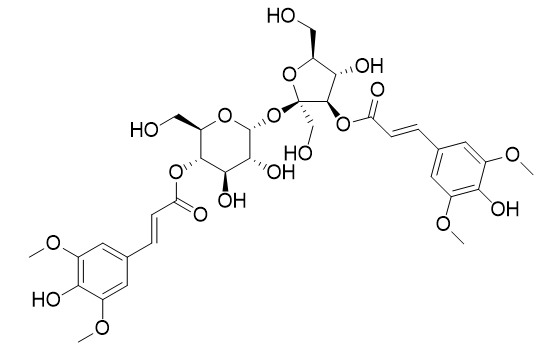Sibiricose A4
Reference standards.
Inquire / Order:
manager@chemfaces.com
Technical Inquiries:
service@chemfaces.com
Tel:
+86-27-84237783
Fax:
+86-27-84254680
Address:
1 Building, No. 83, CheCheng Rd., Wuhan Economic and Technological Development Zone, Wuhan, Hubei 430056, PRC
Providing storage is as stated on the product vial and the vial is kept tightly sealed, the product can be stored for up to
24 months(2-8C).
Wherever possible, you should prepare and use solutions on the same day. However, if you need to make up stock solutions in advance, we recommend that you store the solution as aliquots in tightly sealed vials at -20C. Generally, these will be useable for up to two weeks. Before use, and prior to opening the vial we recommend that you allow your product to equilibrate to room temperature for at least 1 hour.
Need more advice on solubility, usage and handling? Please email to: service@chemfaces.com
The packaging of the product may have turned upside down during transportation, resulting in the natural compounds adhering to the neck or cap of the vial. take the vial out of its packaging and gently shake to let the compounds fall to the bottom of the vial. for liquid products, centrifuge at 200-500 RPM to gather the liquid at the bottom of the vial. try to avoid loss or contamination during handling.
Molecules.2022, 27(22):7887.
Current Analytical Chemistry2024, 20(8):599-610.
Eur J Pharmacol.2024, 981:176883.
Plant Physiol Biochem.2021, 160:166-174.
Molecules.2019, 24(24):E4536
Nat Plants.2016, 3:16205
Phytomedicine.2021, 2(82):153452
Int J Mol Sci.2024, 25(19):10660.
Molecules.2021, 26(3):695.
PLoS One.2018, 13(4):e0195642
Related and Featured Products
Journal of Food and Drug Analysis Volume 23, Issue 1, March 2015, Pages 144-151
Quality analysis of Polygala tenuifolia root by ultrahigh performance liquid chromatography–tandem mass spectrometry and gas chromatography–mass spectrometry[Reference:
WebLink]
Polygala tenuifolia root is used as a functional food due to its attractive health benefits. In this study, ultrahigh-performance liquid chromatography–tandem mass spectrometry (UPLC-MS/MS) and gas chromatography–mass spectrometry (GC-MS) were utilized to characterize the bioactive compounds in P. tenuifolia root. The UPLC-MS/MS information revealed 36 bioactive compounds, including oligosaccharide esters, polygalasaponins, and polygalaxanthones. GC-MS identified 34 volatile compounds with fatty acids as the main chemicals. The leading compound judged by UPLC-MS/MS was tenuifoliside A, and oleic acid was the leading volatile from GC-MS profiles. All samples tested showed similar bioactive compound compositions, but the level of each compound varied. Principal component analysis revealed the principal bioactive compounds with significant level variations between samples. These principal chemicals could be used for quality judgment of P. tenuifolia root, instead of measuring the levels of all compositional compounds.



